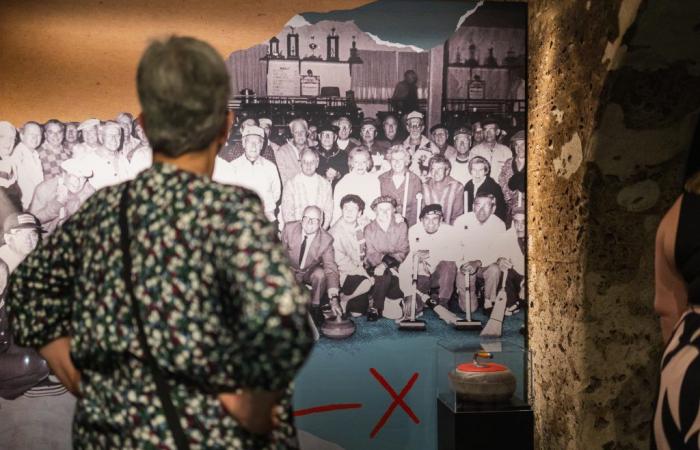The Borealis Museum team has worked hard over the last nine months to transform the place and create its new permanent exhibition, Transformations.
Visitors to the museum are literally invited to go back in time as they go up the stairs, from the vaults to the upper floor.
Through a completely reinvented route which doubles the exhibition area, visitors are confronted with the harsh reality of workers of the previous century, both loggers and log drivers as well as nurses worried about the health and safety of workers in the workplace. of work. A short moving section also focuses on the closing of the factory.
“It’s important for us to generate emotions during the visit. We want people to experience something, for it to bring back memories. We also want to put people first, so we continue to highlight our collection of testimonies, while exploring new themes, indicates Romain Numérot, heritage director at Culture Trois-Rivières. And rather than the object being at the center of the exhibition, we seek to ensure that it is the visitor who is at the heart of the experience. »
In addition to the various interviews carried out, 19 witnesses are cited in this new exhibition. The testimonies collected enhance the museum experience lived by the public by providing a wide variety of perspectives. It is about life in the factory, but also life in the industrial district adjacent to the factory.
Artifacts coexist with the audiovisual experience present to bring to life the different testimonies collected.
Follow the orange doors
The exhibition Transformations was designed to be able to be visited independently by simply following the orange doors that we come across on our route. However, guided tours are still available for people who would like even more details on aspects covered in the exhibition.
“There is also a more family-friendly route which is more integrated into the exhibition, in the sense that there are interactive sections and also through the dynamism of the videos and the design of the space. It’s not a youth exhibition, but we were keen to make it more accessible to families. For example, there are many things that you can touch throughout the exhibition. »
(Photo Etienne Boisvert)
Among other things, visitors are encouraged to restart the factory by restarting four stations. “It allows you to better understand how the building worked. By going through the four stations using a game, we think that it helps to better illustrate the path that the water takes in the factory, where it left, where it was going. The operations are simple to carry out and it gives the opportunity to read the small texts which explain what the operations of each station are for,” explains the heritage director.
In the tower, Boréalis addresses the broader theme of industrial heritage. Inside, the visitor finds himself at the heart of a discussion between the machine and the expert. Three televisions talk to each other and discuss different issues. “It’s a theme that was close to our hearts because few museums address industrial heritage. We treat this theme more broadly than Boréalis and Trois-Rivières. We consider it important to mention it to tourists too, because it is not treated the same way everywhere. »
The forest from all its angles
The exhibition also explores the technological and environmental issues of a constantly changing industry. Moreover, the theme of the forest takes a very important place in the exhibition. Transformations.
“We approach it from all its angles and its issues. It’s important to talk about it because it’s not nothing in terms of socio-ecological transition. Wood is a material that has resurfaced for construction, but also to create new packaging. It’s topical and it’s a new theme that we wanted to address and which could evolve over the years depending on advances in research, for example,” adds Romain Numérot.
Borealis also gives the floor to experts on the issues surrounding the forest: total felling and clearcutting, forest regeneration, the economic aspect with the exploitation of forests today, the cultural aspect with the vision of the Atikamekw Nation in relation to the forest and the consultations carried out, as well as the social aspect linked to the mycological sector and the food forest.
The accessibility of the tour has also been improved, so that all areas are wheelchair accessible, including the water tank. Better signage and detailed audio description have also been put in place.
Borealis reopens its doors to visitors on June 18. The immersive cruise History on the water will resume service from June 25



